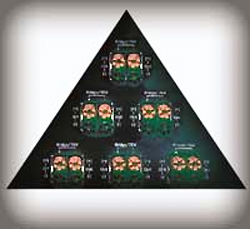
For years, power amplifiers with multiple channels (generally defined as more than two) were for either multiple headphones in studios or low-power-per-channel commercial applications.
But are multichannel amps viable for mainstream professional sound reinforcement? You bet. Times have changed, and once again with regard to equipment, the change is for the better.
Units with 3 to 6 channels have actually been around since the early 1980s. However, these either had a rather low power-per-channel rating or were fraught with design and reliability problems. As a result, relatively few touring or commercial professionals used them.
With the advent of switching power supplies, PWM (Pulse-Width Modulation) class D output topologies, these design limitations are becoming a thing of the past. Most of the major players in the amplifier production game (as well as a host of lesser known ones) have shown an increased proliferation of models in the genre.
Professional user acceptance is also becoming more widespread as a result.
The advantages are many. New output topologies are more efficient and waste far less energy. The classic A/B class is perhaps 40 percent efficient, while some of the newer class D designs are up to 95 percent efficient. This means smaller, lighter power supplies and far less heat that needs to be dissipated by fans or large heat sinks.
Newer switching power supplies, already required to produce only half the power for class D versus class A/B output stages, also jettison the large, heavy and expensive power transformers required of yesterday’s power supplies.
Thus the size and dollar-per-watt of multichannel amps has been dropping dramatically in recent years. Typical chassis sizes range from 2U to 3U rack spaces, with 4 to 8 channels common.
Weight reduction is also substantial. Few multichannel units exceed 40 pounds while producing as much or more power per channel than heavier 2-channel units of decades past. Less weight isn’t as critical for fixed installations as for portable use, but less rack spaces and more channels benefits both markets greatly.
